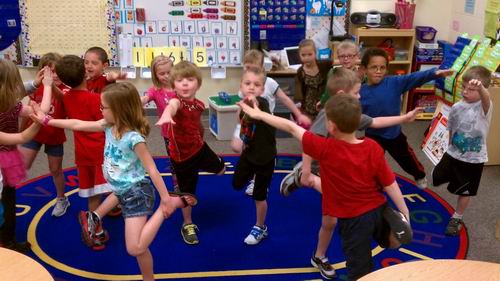- Main Principles of Humanistic Psychology : Understanding Humans as Complete Individuals
- Your Complete Roadmap To Recovering From Ghosting
- 10 Telltale Signs You are in a Cookie Jarring Relationship
- How to Shape a Positive and Confident Personality in Your Pet Bird
- How to Choose a Pet Bird That Complements Your Lifestyle and Personality
The Most Effective Study Techniques for Every Learning Style

Academic achievement depends heavily on the effectiveness of your studying method, but a one-size-fits-all approach simply will not cut it. To truly optimize your study time, it's crucial to identify and understand your unique learning style. In this comprehensive guide, we'll delve into the most advantageous study strategies tailored specifically for visual, auditory, and kinesthetic learners. Every individual learns differently - some excel in visual aids, others in auditory aids, and a select few through physical engagement. So, without further ado, let's explore the ideal study techniques that will make you a master of your own learning style.
Visual Learners
Visual learners tend to remember what they see better than what they hear or touch. They enjoy using charts, graphs, and diagrams to understand information. Common traits of visual learners include the ability to create mental images, the tendency to visualize information when reading, and a preference for written instructions.
Best Study Techniques
Visual learners can make the most of their study time by using the following techniques:
-
Create visual aids: Create charts, diagrams, or flashcards to help you understand information. Use colors and images to help you retain information better.
-
Watch videos: Watch educational videos on the subject you're studying. This will help you see the information come to life and retain it better.
-
Highlight important information: Highlight important information in your study materials. This will make it easier to find and remember when you need it.
-
Draw mind maps: Draw mind maps to help you understand the relationships between different pieces of information.
-
Take breaks and look away: Take short breaks every hour and look away from your books. This will help you retain information better and avoid eye strain.
Auditory Learners
Auditory learners understand information best through sound. They enjoy lectures and discussions and are good at retaining information they hear. Common traits of auditory learners include the ability to remember information that was read out loud, a preference for verbal instructions, and the tendency to read information out loud to themselves.
Best Study Techniques
Auditory learners can make the most of their study time by using the following techniques:
-
Use audio aids: Use audio books, podcasts, or audio lectures to help you understand information.
-
Study with a partner: Study with a partner and discuss the information you're learning. This will help you retain information better.
-
Teach someone else: Teach someone else what you've learned. This will help you retain information better and give you a deeper understanding of the material.
-
Use mnemonics: Use mnemonics or memory aids to help you remember information.
-
Record yourself: Record yourself reading the information you need to learn. Play the recording back and listen to it several times to help you retain information better.
Kinesthetic Learners
Kinesthetic learners understand information best through movement and touch. They enjoy hands-on activities and tend to retain information better when they are physically active. Common traits of kinesthetic learners include the tendency to fidget, the need to take breaks and stretch, and the ability to remember information through physical activity.
Best Study Techniques
Kinesthetic learners can make the most of their study time by using the following techniques:
- Use hands-on activities: Use hands-on activities, such as building models or doing experiments, to help you understand information.
-
Take breaks and move around: Take breaks every hour to stretch, walk around, or do physical activity. This will help you retain information better and avoid feeling restless.
-
Use manipulatives: Use manipulatives, such as blocks or flashcards, to help you understand information.
-
Act out scenarios: Act out scenarios related to the information you're studying. This will help you retain information better and give you a deeper understanding of the material.
-
Write information out by hand: Write information out by hand instead of typing it. This will help you retain information better and give you a deeper understanding of the material.
FAQs
- What are the different learning styles?
- The different learning styles are visual, auditory, and kinesthetic.
- What is a visual learner?
- A visual learner is someone who understands information best through pictures and images.
- What is an auditory learner?
- An auditory learner is someone who understands information best through sound.
- What is a kinesthetic learner?
- A kinesthetic learner is someone who understands information best through movement and touch.
- What are the best study techniques for visual learners?
- The best study techniques for visual learners include creating visual aids, watching videos, highlighting important information, drawing mind maps, and taking breaks and looking away.
- What are the best study techniques for auditory learners?
- The best study techniques for auditory learners include using audio aids, studying with a partner, teaching someone else, using mnemonics, and recording yourself.
- What are the best study techniques for kinesthetic learners?
- The best study techniques for kinesthetic learners include using hands-on activities, taking breaks and moving around, using manipulatives, acting out scenarios, and writing information out by hand.
- Prioritizing Self-Care: Why Taking Care of Yourself is Essential for Supporting Others
- Six Reasons to Study Psychology
- How to Increase Your Chances of Success?
- 6 Signs You Are Hypervigilant
- Bird Personality : Reverse Thinking Dove
- Big Five Personality Traits. What is it and Why it matters?
- The Impact of Alexithymia on Mental Health and Relationships
